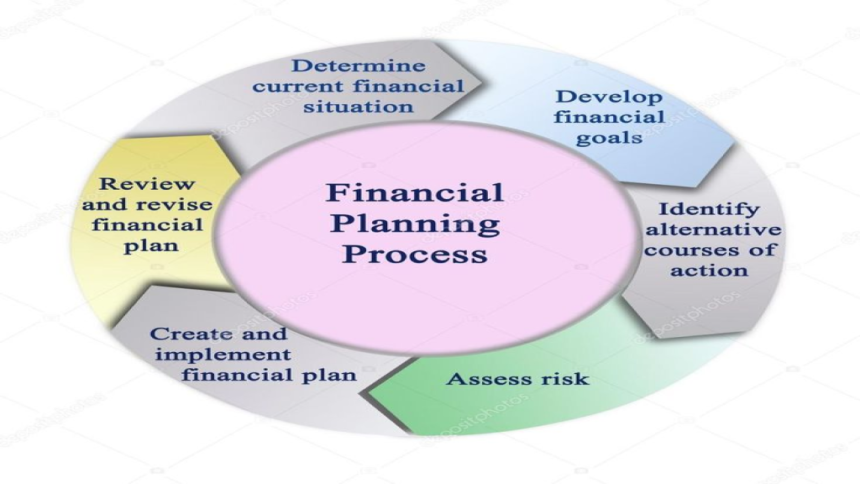Financial Planning for a Philanthropic Organisation
Where money buys not only luxury but also the ability for a person to implement changes in society, the idea of the financial planning of charitable contributions has recently emerged. It is an attractive strategy that interconnects personal monetary objectives with a strong passion for social justice, enabling every person and many families to set their monetary visions consistent with their ethical principles. For business people, working professionals, or retirement-age individuals, philanthropic financial planning is a guiding concept to making a more profound difference than just the amount of the financial endowment.
What Are The Steps Of Philanthropic Financial Planning?
Philanthropic financial planning is the process of incorporating the issue of philanthropic giving into a coherent economic plan. It entails creating a financial plan that achieves your goals—whether you want to retire, provide for your family, or grow your investments while supporting organizations you cherish.
This differs slightly from giving a single donation or contributing only when emergencies need sponsorship. My definition of wealth management is about how to build up a long-term goal of your financial outlook that can be helpful for you as well as society at large. By doing so, it allows you to:
- Learn how to get the most out of your philanthropic investments.
- Give financially in a way that helps you minimize the taxes you owe.
- Make certain that the giving reflects what you or your family consider important.
Why Philanthropic Financial Planning?
As with many clients, wishing to incorporate philanthropy into the financial planning process comes from self-motivation. But beyond altruism, there are several practical benefits:
1. Tax Efficiency
Some charitable approaches, such as establishing donor-advised funds, charitable trusts, and direct gifts of appreciated assets, will lessen your tax implications. This helps the organizations you support and allows you to retain more money.
2. Family Legacy
Engaging family members in philanthropic planning can unite families and raise generations’ values. Explain some teachings to the younger generation in the family, such as responsibilities, the ability to relate to others, being wise, and even money management pacts.
With money, you can solve some of the world’s biggest problems today, such as education, health, global warming, and concerns like racism or immigration. Strategic giving and programming coordination are important parts of philanthropic financial planning.
Ways On How To Develop A Philanthropic Financial Strategy
Developing an efficient philanthropic financial plan is not haphazard but requires a step-by-step approach. Here’s how you can start:
1. Define Your Values and Goals
When it comes to cause, what makes an impact on you? Whether you want to eliminate hunger, fund music, or help scientists find new cures, your orientation will show you the way.
2. Check Your Financial Standing
Pay a consultant to analyze your current situation regarding asset income and potential requirements. This will help them know how much they can afford to be generous without collapsing financially.
3. Selecting The Right Giving Vehicles
Explore various charitable giving vehicles, such as:
Donor-Advised Funds (DAFs): These accounts allow you to give assets right now, claim an immediate tax deduction, and suggest grants later
Charitable Remainder Trusts (CRTs): Leave to you or your beneficiaries – with the residue to charity.
Private Foundations have fewer restrictions due to a higher level of control and the possibility of making changes, but they require more paperwork.
4. Create a Giving Strategy
Determine what you want to give and when you want to provide it. This might involve:
- Annual contributions made to separate organizations.
- I want to provide grants to support long-term projects.
- Doubling donations to increase your presence.
5. Monitor and Adjust
Philanthropic financial planning, therefore, is a dynamic exercise. Remember to review your plan in light of your principles and values, your financial situation, and the needs your plan serves in society.
The Place Of A Professional Recommendation
Regarding financing, philanthropic financial planning usually involves undertaking certain professional complexities. Financial planners, tax advisors, and charitable consultants can help you:
- Make sure you comprehend the tax consequences of your philanthropy.
- Find out which causes deserve our donations and support.
- Organize your contributions in a manner that gets the most results.
- Collaboration with professionals guarantees that charity is meaningful and lasts for a long time.
The Entrepreneurial Philanthropist
The second idea is oriented toward education. After selling a tech company, Mark wanted to invest much of his money in this area. He had a donor-advised fund that helped subsidize scholarships, technology access programs, and I-passes for teachers, and he enjoyed hefty tax deductions.
The Family Legacy Builder
For this reason, the Patel family realized that it was commendable to introduce their children to aspects of social responsibility. Their foundation provided the means to support health programs in rural areas and taught their children due diligence in charitable and rewarding activities.
Conclusion
PTheiral planning is an effective technique for health programs. When and taught their children due diligence in that is sustainable be activities and generations. Whether it is the first time you are engaging in philanthropy or aiming to improve your current giving, a clear, join-up approach can multiply the potential of your impact and ensure that when you give, it is what you believe in.Where money buys not only luxury but also the ability for a person to implement changes in society, the idea of the financial planning of charitable contributions has recently emerged. It is an attractive strategy that interconnects personal monetary objectives with a strong passion for social justice, enabling every person and many families to set their monetary visions consistent with their ethical principles. For business people, working professionals, or retirement-age individuals, philanthropic financial planning is a guiding concept to making a more profound difference than just the amount of the financial endowment.
What Are The Steps Of Philanthropic Financial Planning?
Philanthropic financial planning is the process of incorporating the issue of philanthropic giving into a coherent economic plan. It entails creating a financial plan that achieves your goals—whether you want to retire, provide for your family, or grow your investments while supporting organizations you cherish.
This differs slightly from giving a single donation or contributing only when emergencies need sponsorship. My definition of wealth management is about how to build up a long-term goal of your financial outlook that can be helpful for you as well as society at large. By doing so, it allows you to:
- Learn how to get the most out of your philanthropic investments.
- Give financially in a way that helps you minimize the taxes you owe.
- Make certain that the giving reflects what you or your family consider important.
Why Philanthropic Financial Planning?
As with many clients, wishing to incorporate philanthropy into the financial planning process comes from self-motivation. But beyond altruism, there are several practical benefits:
1. Tax Efficiency
Some charitable approaches, such as establishing donor-advised funds, charitable trusts, and direct gifts of appreciated assets, will lessen your tax implications. This helps the organizations you support and allows you to retain more money.
2. Family Legacy
Engaging family members in philanthropic planning can unite families and raise generations’ values. Explain some teachings to the younger generation in the family, such as responsibilities, the ability to relate to others, being wise, and even money management pacts.
With money, you can solve some of the world’s biggest problems today, such as education, health, global warming, and concerns like racism or immigration. Strategic giving and programming coordination are important parts of philanthropic financial planning.
Ways On How To Develop A Philanthropic Financial Strategy
Developing an efficient philanthropic financial plan is not haphazard but requires a step-by-step approach. Here’s how you can start:
1. Define Your Values and Goals
When it comes to cause, what makes an impact on you? Whether you want to eliminate hunger, fund music, or help scientists find new cures, your orientation will show you the way.
2. Check Your Financial Standing
Pay a consultant to analyze your current situation regarding asset income and potential requirements. This will help them know how much they can afford to be generous without collapsing financially.
3. Selecting The Right Giving Vehicles
Explore various charitable giving vehicles, such as:
Donor-Advised Funds (DAFs): These accounts allow you to give assets right now, claim an immediate tax deduction, and suggest grants later
Charitable Remainder Trusts (CRTs): Leave to you or your beneficiaries – with the residue to charity.
Private Foundations have fewer restrictions due to a higher level of control and the possibility of making changes, but they require more paperwork.
4. Create a Giving Strategy
Determine what you want to give and when you want to provide it. This might involve:
- Annual contributions made to separate organizations.
- I want to provide grants to support long-term projects.
- Doubling donations to increase your presence.
5. Monitor and Adjust
Philanthropic financial planning, therefore, is a dynamic exercise. Remember to review your plan in light of your principles and values, your financial situation, and the needs your plan serves in society.
The Place Of A Professional Recommendation
Regarding financing, philanthropic financial planning usually involves undertaking certain professional complexities. Financial planners, tax advisors, and charitable consultants can help you:
- Make sure you comprehend the tax consequences of your philanthropy.
- Find out which causes deserve our donations and support.
- Organize your contributions in a manner that gets the most results.
- Collaboration with professionals guarantees that charity is meaningful and lasts for a long time.
The Entrepreneurial Philanthropist
The second idea is oriented toward education. After selling a tech company, Mark wanted to invest much of his money in this area. He had a donor-advised fund that helped subsidize scholarships, technology access programs, and I-passes for teachers, and he enjoyed hefty tax deductions.
The Family Legacy Builder
For this reason, the Patel family realized that it was commendable to introduce their children to aspects of social responsibility. Their foundation provided the means to support health programs in rural areas and taught their children due diligence in charitable and rewarding activities.
Conclusion
PTheiral planning is an effective technique for health programs. When and taught their children due diligence in that is sustainable be activities and generations. Whether it is the first time you are engaging in philanthropy or aiming to improve your current giving, a clear, join-up approach can multiply the potential of your impact and ensure that when you give, it is what you believe in.



Leave a Reply